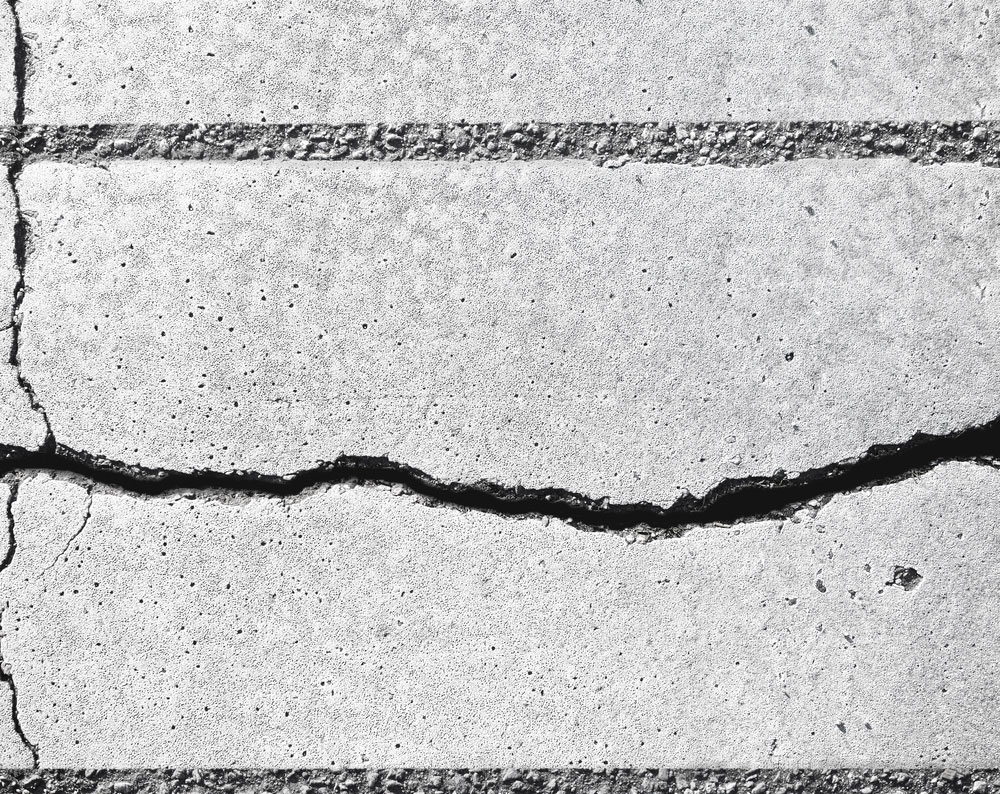Because the climate in this state can experience a broad range of weather, slab foundations have grown popular in Texas. They can adapt to changing temperatures, especially in warmer climates. Because Texas has a shallow frost depth, slab foundations are an ideal choice for homes in this state. If you live up north and your home has a slab foundation, you have probably dealt with more than your share of problems because they can crack in sub-zero temperatures. But just because you live in Texas, it doesn’t mean your slab foundation won’t have problems.
Issues can come up over time, and they will need to be repaired. Like any other foundation, a slab can run into problems caused by shifting soil, house settling, and a number of other issues that can cause damage over time. The good thing is that most of these problems can be easily repaired. Here are some common questions people ask about slab foundation repair.

Some of the signs that your slab foundation is having problems include:
– Cracks in your walls.
– Door frames that are no longer aligned with the doors.
– Uneven floors.
While some cracks can be caused by house settling, you still need to keep an eye on them to make sure they’re not expanding.
As your foundation expands and contracts, it can put pressure on the plumbing (which can cause major problems). Repositioning the foundation can cause plumbing leaks if a pipe gets damaged, which is why you should perform a plumbing test so you can find these lines before you start the foundation repair process.
It will depend on how long the property needs to be lifted. The grade beams shouldn’t be moved once they have been lifted, but the stud walls may need some time to adjust to the new position. It’s best to wait 4-6 weeks to make sure the repair is completely stable.
The foundation repair process may close up any existing cracks, but there’s a chance that new ones will form. The purpose of the entire process is to make sure your home is as close to its original level as possible. Cracks on the bricks of your stairstep can be caused by a compromised foundation, but they will start to go away once the slab has been lifted back into place. There’s no guarantee that the cracks will close, and every property is different.
The pipes under your slab foundation can get damaged any time it settles, so it’s something you can’t avoid. They can also get damaged when the foundation is put back into place, which is why you should hire a plumber after the job has been completed.
Most slab foundations don’t take more than a day or two to repair, but it will depend on what kind of work needs to be done and how much damage is present.
Straight steel or helical piers will usually give you the best long-term solution to foundation problems. Pressed pilings or drilled concrete piers can also be a good choice, but it will depend on your home’s condition and what type of sub-surface strata has been installed.
Foundation repair contractors will usually look at the following to determine the best way to approach the problem:
– Soil type.
– Age and weight of the structure.
– Drainage.
– Foundation strength.
The overall price will also be an important consideration.
A lot of homes in Texas are built on top of slab foundations, with plumbing systems that run under and even through the slab itself. A broken pipe can cause a slab leak, which can lead to dangerous structural damage that will be expensive to repair. Some of the problems you can run into because of a slab leak include:
– Flooding.
– High water bills.
– Mold growth.
– Pests.
– Foundation shifting.
If you don’t take care of a problem with your slab foundation, it can start a disastrous chain reaction. Foundation problems can put your home at risk of getting damaged during storms, and it can increase the likelihood of getting a pest infestation. Your utility bills can go up as your property value can go down. The pipes in your plumbing system can break because of the pressure they sustain, so ignoring foundation problems can become a financial burden that’s hard to escape.
Home insurance policies will cover the cost of foundation repair in some cases. Be sure to contact your insurance provider for more information about specific types of coverage.
You should be concerned about large cracks, especially if they’re more than 1/4-inch wide. You also want to pay attention to multiple cracks that form in a short period of time. Large gaps around your windows and doors can also be a cause for concern.
If your home is showing noticeable signs of settling (such as uneven floors), it’s another indication that you need to take action. You should never ignore any plumbing issues (such as slow drainage or frequent backups). Small changes may not mean that much, but a combination of any of these signs usually points to a more serious issue that shouldn’t be ignored.
This method uses hydraulic jacks to lift and level a sunken slab. It’s an effective way to fix minor settling issues and allows for more precise adjustments. The process starts by drilling holes into the slab, which is followed by inserting hydraulic jacks under the affected areas.
As the jacks are activated, they raise the slab back into place. The technique minimizes damage to your existing foundation, so it’s less disruptive. It’s also a cost-effective option, which makes it a good choice for homes that need minor repairs without having to do a complete foundation replacement.
Helical piers are popular for repairing slab foundations, and it involves the installation of steel piers into the ground below the foundation. These piers anchor into stable soil, which helps to lift and support the weight of the structure. It’s also useful in areas with unstable soil.
The installation process is relatively quick and can be done with minimal disruption to the property. They can also provide long-lasting support for your slab foundation, because it will reduce the risk of it sinking in the future. Helical piers are a reliable solution for both residential and commercial buildings that are experiencing foundation problems.
Polyurethane foam injection has become an increasingly popular method for repairing slab foundations. It involves the injection of special foam under the slab so it can be raised to its original level. The foam will expand quickly to fill any gaps and voids, which can be helpful in stabilizing the slab. The foam is lightweight, so it won’t put any additional strain on the foundation. It also cures quickly, which allows repairs to be done quickly and with minimal downtime.
Having poor drainage around your home can lead to serious problems with your foundation. If water collects around your foundation, it can erode the soil under the concrete slab. This can cause the foundation to shift, which can lead to cracks.
Here are some of the signs that your home has poor drainage:
Pooling water around the foundation.
Cracks in the walls or floors.
Soil movement or settling.
You need to keep your home’s drainage system (including your gutters and downspouts) properly maintained to make sure water is directed away from your home. Taking care of any of these issues will keep your foundation from sinking and cracking over time.
Soil settlement occurs when the ground under your slab foundation shifts or compresses. It usually happens because of changes in moisture levels or when construction has disturbed the soil, and it can cause the concrete slab to crack or sink unevenly.
Some of the common signs of soil settlement include the following:
The drying out of clay soil.
Heavy rains that cause soil expansion.
Nearby construction activity.
As your foundation sinks, you may start to see cracks in the walls or have doors that stick. Performing regular inspections can help you find and fix these problems before they get worse.
If your slab foundation is having problems and you’re looking for one of the best places for foundation repair in Corpus Christi, be sure to get in touch with Streem Foundation Repair. We would be happy to speak with you about your specific needs!
